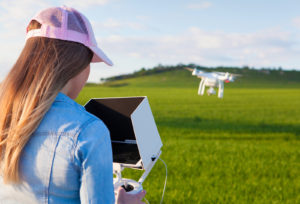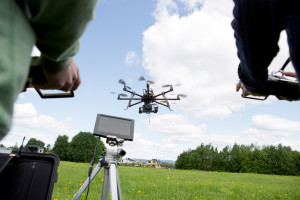Zillow's take on drones
Zillow.com is one of the biggest names in online real estate marketing. You can’t look for a home online without coming across it. And they’re going even further to providing great resources and market research to help real estate agents succeed.
Recently they posted an incredible article on the value of drones in Real Estate. Here’s the article:
Using Drones for Real Estate Photography
The FAA is still hashing out its rules for using drones, but has released some stop-gap measures to regulate drones until those rules are finalized. To date the FAA has issued more than 5,300 permits for commercial use; approximately 2,100 (39 percent) of them were granted to real estate-related companies. The agency anticipates real estate to comprise about 22 percent of the top markets, with the most popular application being aerial videos that showcase homes.
You might be asking yourself if using drones in your real estate business is viable — even necessary — to stay competitive or if it’s just a flash in the pan. Whatever you decide, drones are shaping up to be the next evolution in real estate marketing.
Here are a few things to think about if you’re considering drones for your real estate photography.
Drones have more uses than you realize
Drones — also known as unmanned aircraft systems (UAS) — are typically associated with military applications. For real estate agents, however, drone photography can show potential buyers a variety of details, including:
Encompassing aerial views of the entire property and land
What the drive home or the kids’ walk to school looks like
The neighborhood and surrounding area, including the home’s proximity to amenities
Civic developments or local improvement districts (LIDs) that the buyer’s property taxes might contribute to
Property maps and surveys
Drones make elevated imagery affordable
Many real estate agents obtain elevated photography using airplanes and helicopters, which can cost hundreds, if not thousands of dollars per flight and limit the number of properties you can afford to shoot. Drones can significantly cut the cost of shooting elevated imagery — viable models start at a few hundred dollars, and camera attachments are similarly moderately priced — and enable you to use their aerial footage on many more listings, regardless of price range.
Depending on your equipment setup, drones can shoot stills, video or both. You can edit and share the video using a number of tools and without extensive experience or expertise. Drone operation mostly requires a steady hand and a cool head — no need to hire a professional pilot. And even if you do choose to outsource your drone photography, it might still be less expensive than hiring an airplane or helicopter.
There are already strict rules to follow
The idea of drones buzzing around your head or taking illicit footage of you through your window is disturbing and not lost on the FAA. The agency has already released a process for users to start legally using drones, and provided operational guidelines and common sense rules.
Licensing
To start the process for commercial drone (or other UAS) operation, users must file a petition to Section 333 of FAA Modernization and Reform Act of 2012; the process takes approximately 120 days. Once you get an exemption number from section 333, you must register the drone with the FAA and obtain a civil Certificate of Waiver or Authorization for each “blanket” air space you plan to operate in; after this certification, you can apply for full airspace. The final step is to get your FAA airman certificate for private, recreational or sport pilot.
Operation
Drone operators must be 13 years or older and take a lesson before flying. Their UAS must weigh less than 55 pounds. Operators must fly under 400 feet — plenty of height to capture a home’s features — and only during daytime, keeping the drone within sight.
No-drone zones
In general real estate use, you’ll most likely stick to residential areas, but there are some places you should be aware of where UASs are strictly prohibited. These include sports stadiums and racetracks, papal visits, the District of Columbia, forest fires and less than five miles from any airport. Operators must also keep their drones away from children and animals.
Etiquette
It’s been an uphill battle for real estate professionals to get everyone on board with using drones for their industry, so keep the goodwill going by becoming a drone ambassador and, no pun intended, rise above those whose behavior can curtail UAS use for everyone.
Ask homeowners for permission before you launch your drone.
Don’t fly over any private property without asking first.
Avoid flying over crowds of people.
Read the manual and take every opportunity to practice.
Don’t let animals or kids chase the drone.
The FAA’s official guidelines will address specific concerns regarding:
Privacy: Even though the seller grants you permission to obtain drone footage of their home for your marketing purposes, how will you deal with neighbors who might feel under the microscope as well?
Safety: What happens if a home you need photography for is located near an airport — an FAA designated no-drone space with heavy fines for violation?
Noise: How will drone operation be governed so that their noise doesn’t interfere with life at ground level?
Until the FAA releases its guidelines, users can view a list of its proposed UAS rules in the meantime.
Drones are here to stay
Drones are already in the sky — being used for a variety of applications, including law enforcement, telecommunications, weather monitoring and more — and they’re going to stay there. The FAA is currently issuing permits at a rate of more than 500 per month and is using summary grants to speed up exemption approvals — with photography being 50 percent of the usage requests — and predicts sales of commercial small unmanned aircraft systems (sUAS) to jump from 600,000 units to 2.5 million in the next year.
A study by the Association for Unmanned Vehicle Systems International (AUVSI) estimates that integrating drones into the national airspace will generate more than $13.6 billion and create more than 70,000 new jobs in the first three years of integration. AUVSI also projects that tax revenues to states will exceed $482 million in the first 11 years of integration, and that states with flourishing aerospace industries will benefit the most from drone integration.
Using drones for real estate photography will become increasingly common as agents ask the FAA to issue more permits and hash out the guidelines for commercial use. No matter what rules are in place, using drones will spark some degree of controversy, but there’s no rebottling that genie. Once federal, state and industrial organizations agree on the major points, drone adoption and operation will quickly escalate. If you’re considering using drones for real estate photography, be ready for it: You might be the first in your area to offer clients that service, making you stand out from the competition while adding a serious wow factor to your marketing.
Taken from: http://www.zillow.com/agent-resources/trends-and-data/tips-and-advice/drones-real-estate-photography/
For another article on the topic from Zillow, check out this: https://www.zillow.com/agent-resources/trends-and-data/housing-market/drone-use-real-estate-marketing/amp/




